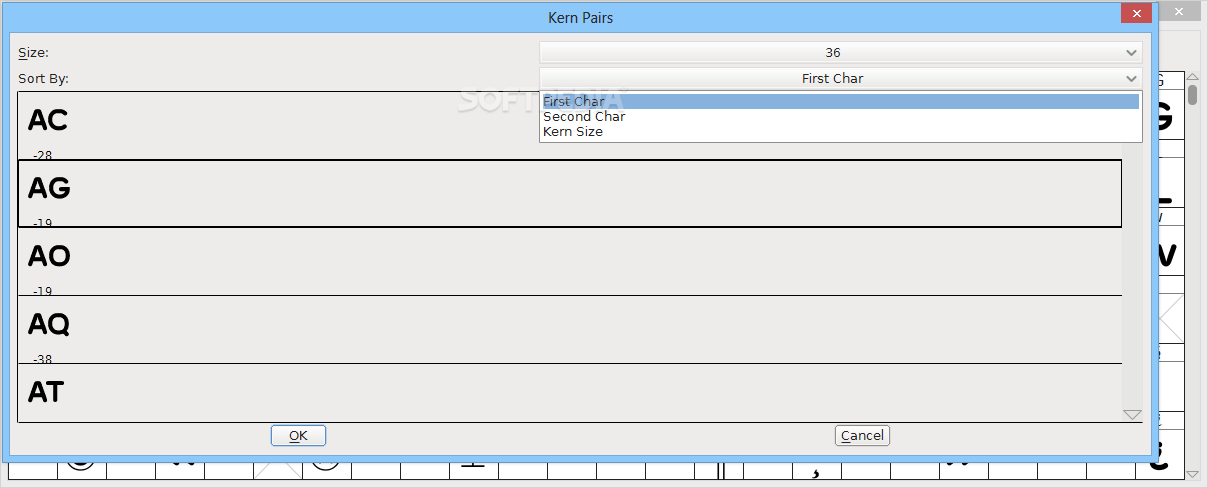

- Fontforge glossary how to#
- Fontforge glossary install#
- Fontforge glossary manual#
- Fontforge glossary code#
- Fontforge glossary ps3#
Type 1, PostScript Type 1, PS1, T1, Adobe Type 1 This article/section is a stub - probably a pile of half-sorted notes, is not well-checked so may have incorrect bits. Font types This article/section is a stub - probably a pile of half-sorted notes, is not well-checked so may have incorrect bits.
Fontforge glossary manual#
In some setups, manual installation may have to be followed by a ttmkfdir (or type1inst for (Type 1) PostScript fonts) and/or a restart of your font manager, or possibly even of X - or it may be handled automatically. Place the font in one of the system font directories. In both cases, you can copy the font file to this window - which actually places it in one of the system font directories.
Fontforge glossary ps3#
2.1.2 Type 3, PostScript Type 3 Font, PS3 or T3.2.1.1 Type 1, PostScript Type 1, PS1, T1, Adobe Type 1.So use your own naming and replace it when you generate the font for shipping. During development you can use any human readable name. The rest of the glyphs should be named uniXXXX where XXXX is the Unicode index. You should name all glyphs that occur in the Adobe Glyph List by their AGL glyph name. You can create them like this: font.createChar(-1, 'some_name') And are useful for open type features or building blocks to compose new glyphs. Glyphs without a unicode point can be referenced within a font by name. The 'CJK Unified Ideographs' live in 'Basic Multilingual Plane (BMP)'. The Unicode Consortium defines the Unicode standard.
Fontforge glossary code#
Glyphs and their code points: > for c in u'ABC 賢治': print ord(c). createChar(uni) 'A' is 65 so char = font.createChar(65) To include a glyphlist (shouldn't be necessary)įontforge.loadNamelist('glyphlist.txt') # load a name listĬreate the glyph by code point. Start with a empty font so the font isn't the problem: import fontforgeįont = fontforge.font() # create a new font
Fontforge glossary install#
Run brew install fontforge of course with all flags you need. Run `brew linkapps` to symlink these to /Applications. Set PYTHONPATH if you need Python to find the installed site-packages:Įxport PYTHONPATH=/usr/local/lib/python2.7/site-packages:$PYTHONPATH Optional: cairo ✔, pango ✘, libspiro ✘, czmq ✘īuild with X11 support, including FontForge.app This is the info: allcaps$ brew info fontforge I successfully installed Fontforge with Python extension with Homebrew. Sounds like FontForge tried to map Unicode values to glyph names and couldn't. What is AGL? I looked it up: "Adobe Glyph List - a standard glyph naming convention". But since Hoff seemed not to encounter the same error I did, I'm not ruling out a build issue.Įither way, I don't understand the error involving AGL. dmg only to find it lacked python support. I had at first installed a pre-built version from a.

I appear to have it up and running properly.
Fontforge glossary how to#
I was happy to discover this, but still don't understand how to provide the NameList it wants.Īfter five hours of struggling yesterday with building FontForge (a confusing process on a Mac).

But upon running his script I encounter problems which raise more questions: Failed to find NameList: AGL For New Fonts įirstly, thanks to the user Hoff for posting code here that answered a big part of my question. Luckily FontForge supports python scripting! Unluckily I haven't been able to get it working. So there will definitely be some scripting / batch processing required.

I want to create a font with a large volume of glyphs.


 0 kommentar(er)
0 kommentar(er)
